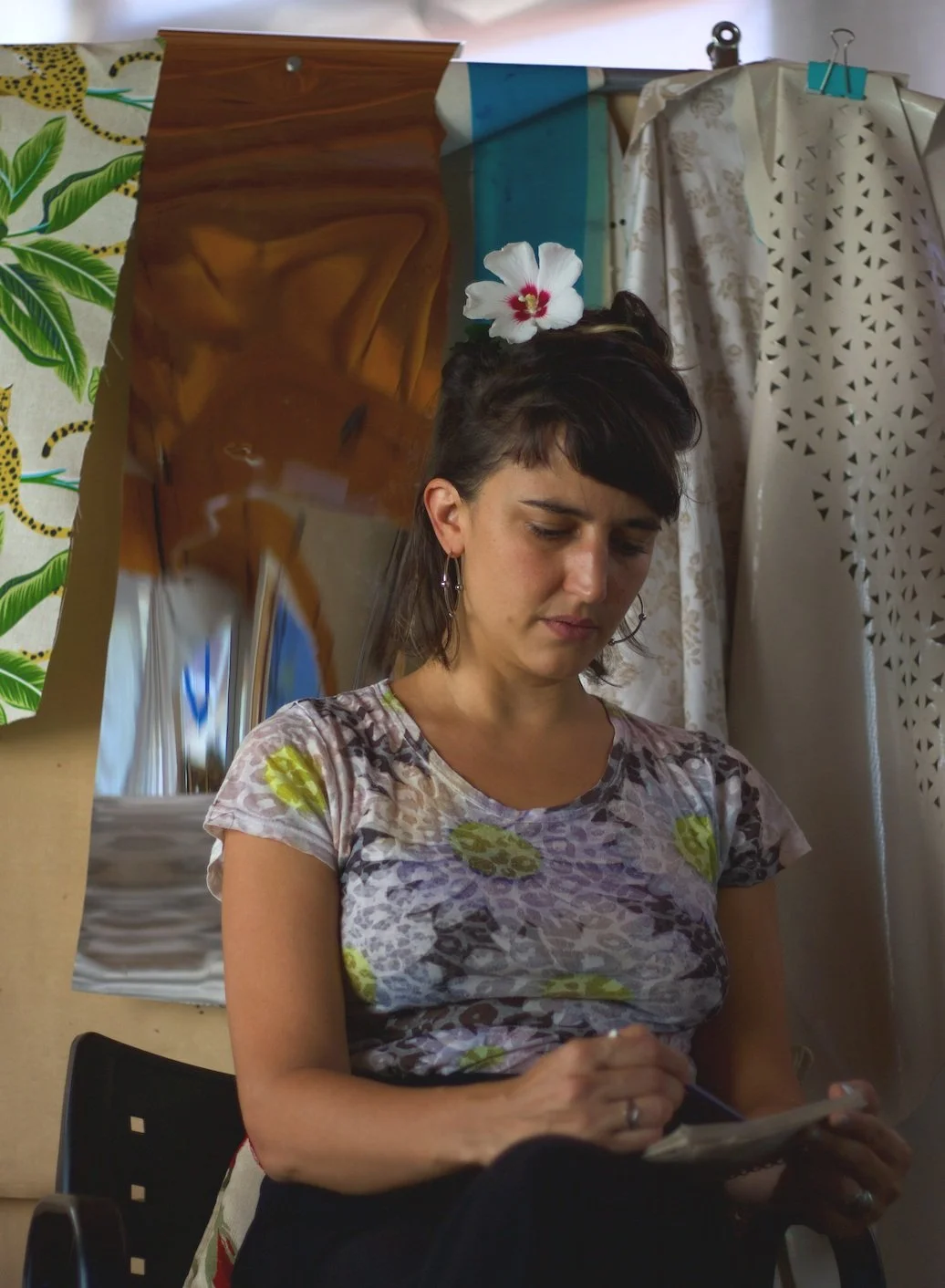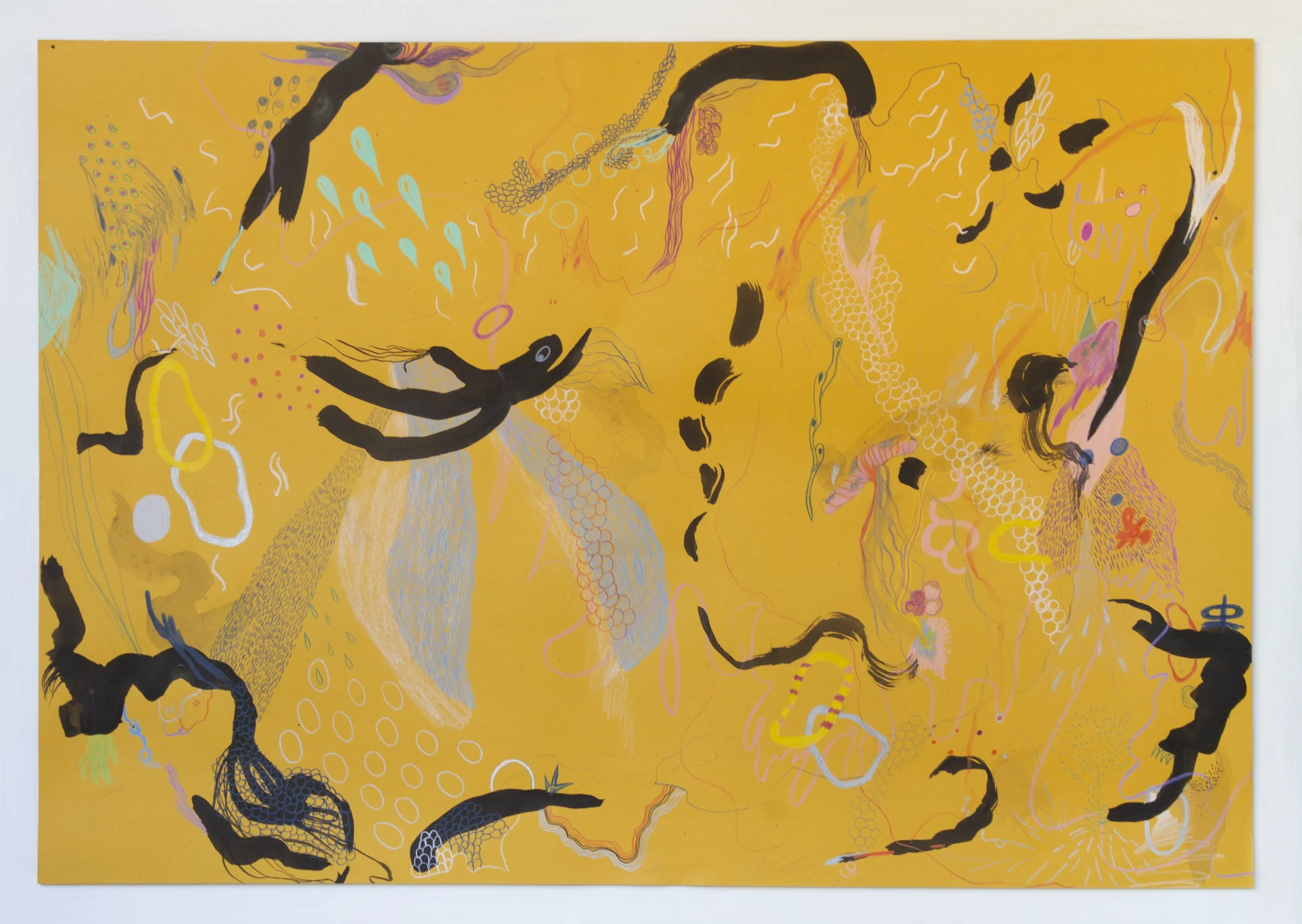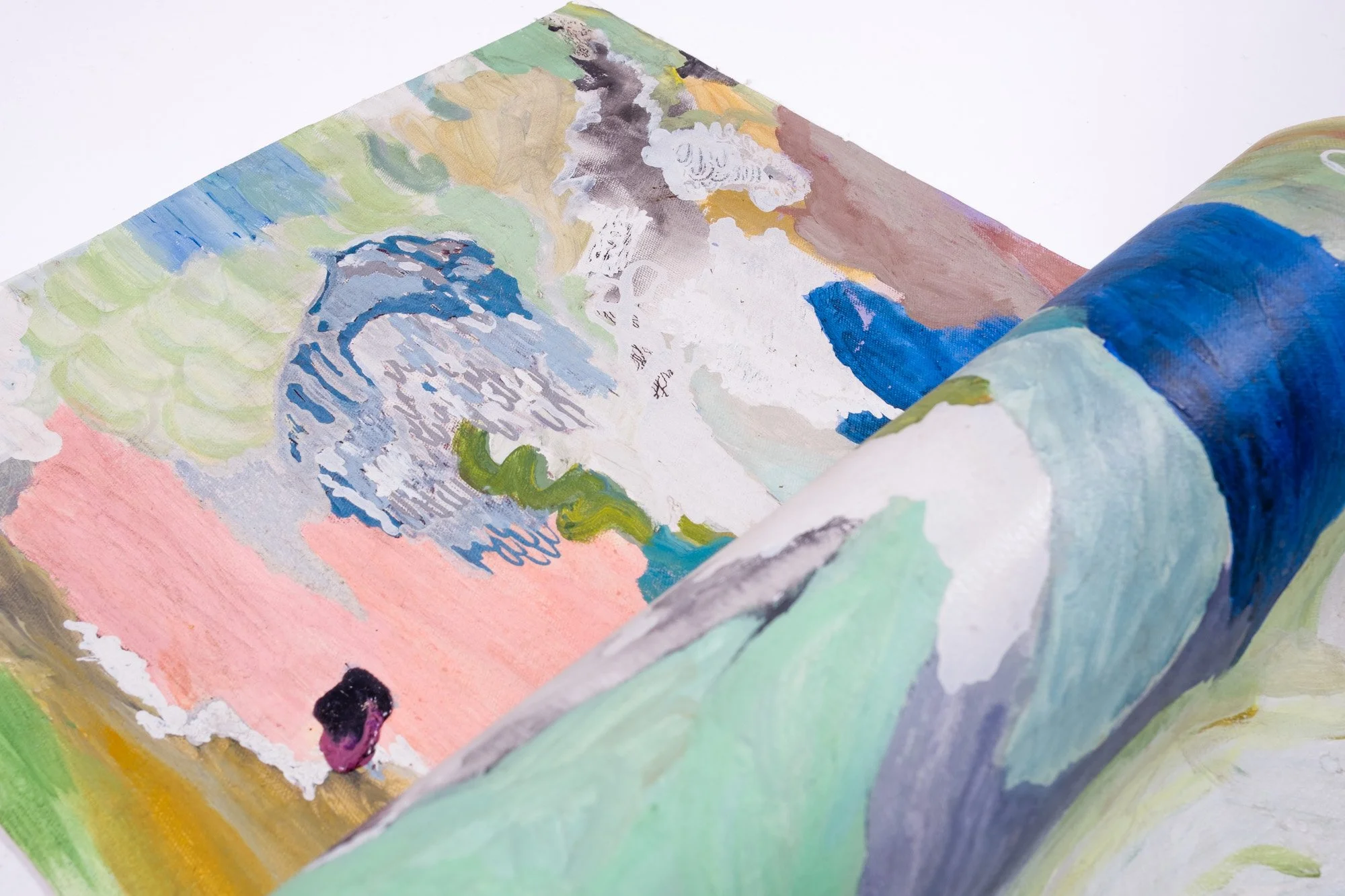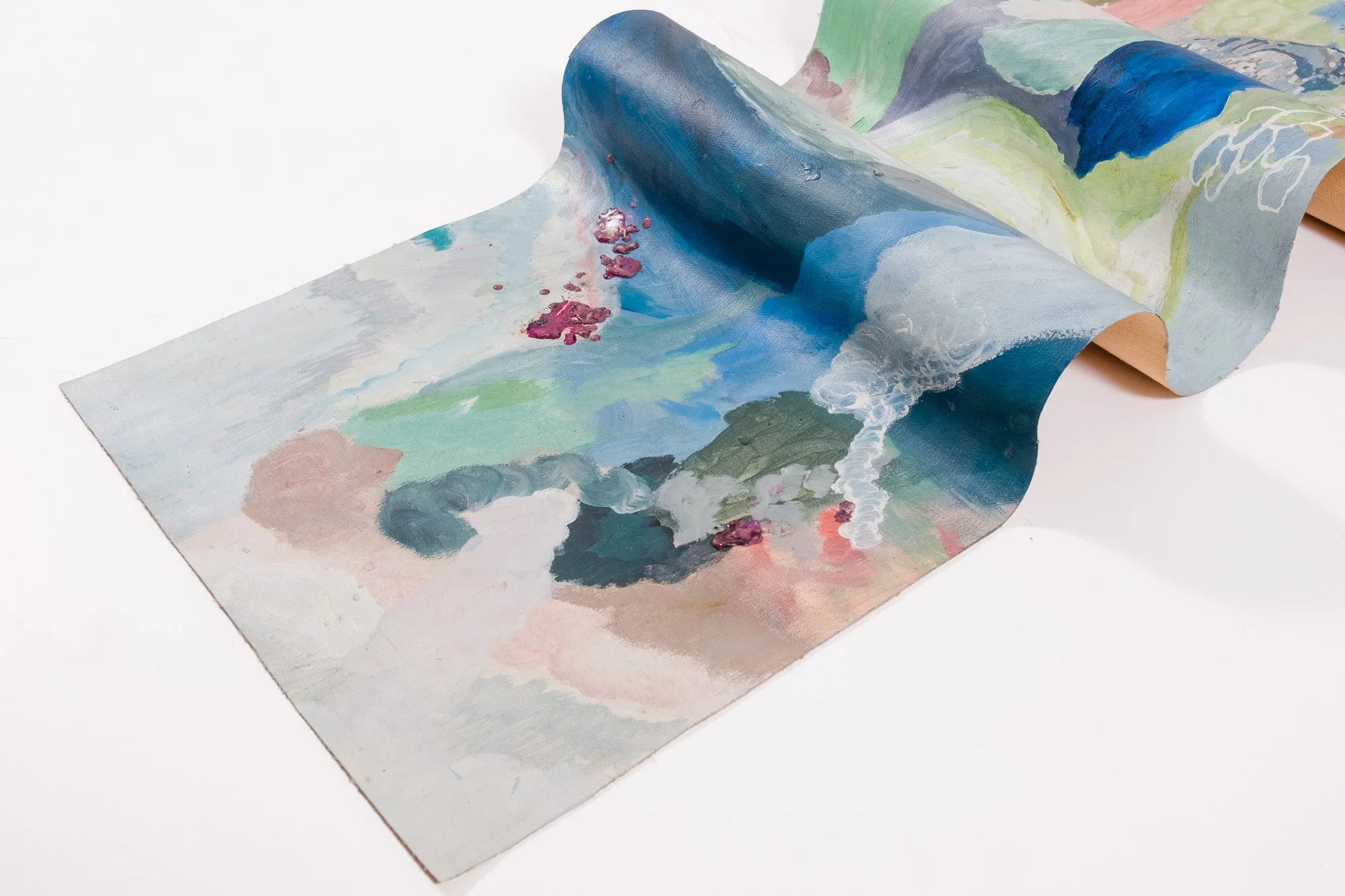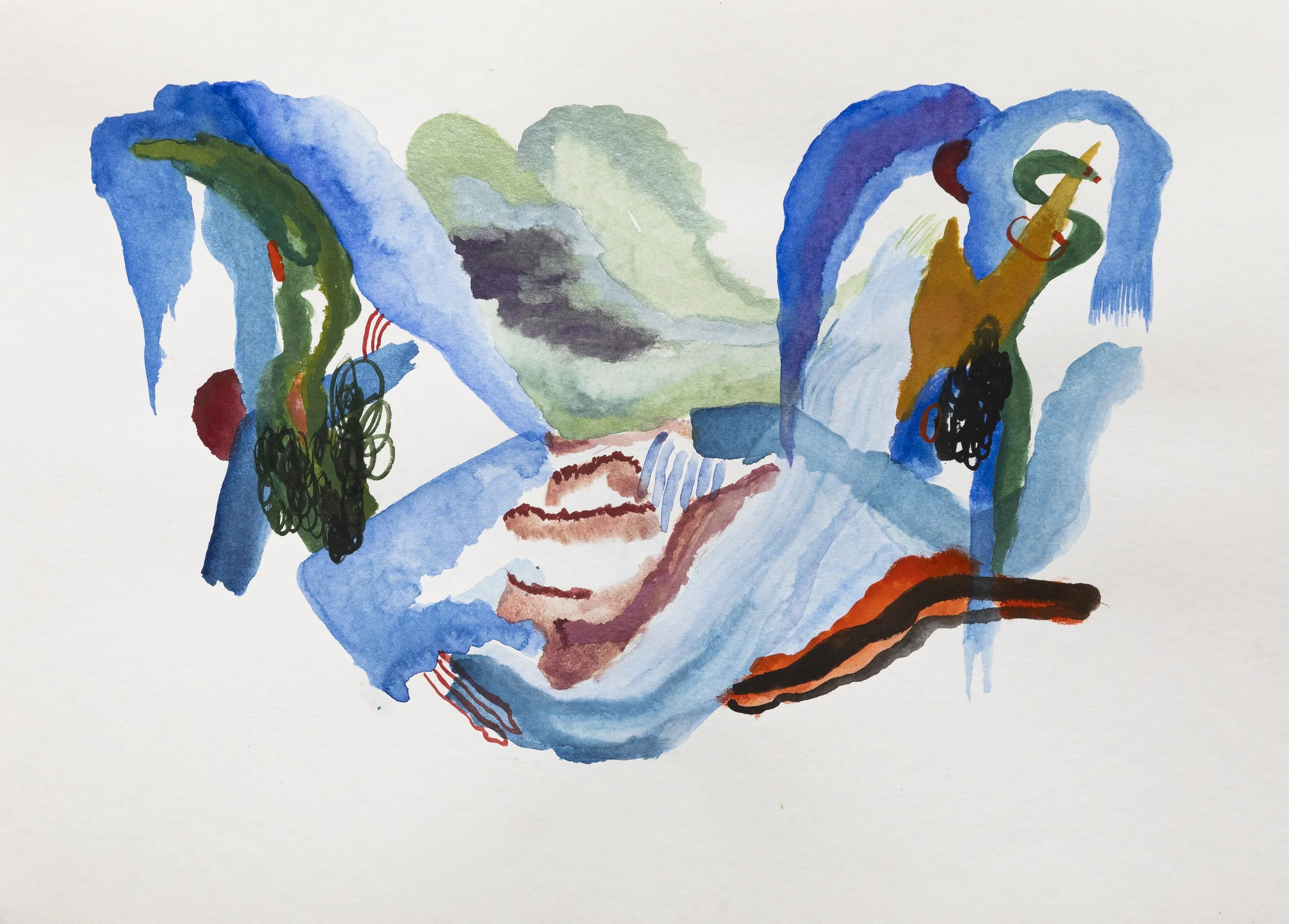10 Questions with Irene Molnár
Irene Molnár (1986, Buenos Aires) is a visual artist and researcher. In 2003, she began her studies in performing arts, and in 2010, she trained in contemporary dance. She participated in independent theatre festivals, cycles and national and international filming. In 2008, she began painting as a self-taught artist, then she took part in workshops and in 2013, entered the Manuel Belgrano Higher School of Artistic Education (ESEA). She trained in Curation with María Lightowler (2021), conducted a work clinic with Tulio de Sagastizabal (2021), Diana Aisemberg (2022-23) and Leila Tschoop (2019). Received the Sívori Museum Artist Book Award (2022). In 2021, one of her works was selected for the OSDE Foundation Award and in 2017, she held a group exhibition at Espacio Modos, where one of her paintings was selected to be part of the Vittal Art Collection. In 2023, she obtained a Ruido Blanco Residency scholarship, Puerto Iguazú, where she carried out a pictorial project and another performative project and participated in a micro-residency at Wabi Sabi in Nordelta.
Irene Molnár - Portrait
ARTIST STATEMENT
“I use various supports where the body, nature and space are the three axes that I address. It is generally organised through the stain or the gesture. I take references from cinema, theatre, and any culture or any human experience. My work is characterised by the use of colour and its different densities.
I draw, paint, make soft sculptures, intervening in space, objects, collages, installations, etc. I use conventional materials such as watercolours, acrylic and oil paint, markers, pencils, industrial materials, various fabrics, waste materials, or any other material that I have at my disposal. Subtle and loose brushstrokes coexist with different textures and consistencies of pigments and material exploration, superimposition of layers, and folds. I am interested in generating volumes by twisting the supports or modulating them, opening them and locating them in space. The images and reflections emerge as I transform the materials and supports. I usually work in series where the works share the same atmosphere.”
— Irene Molnár
Universos, Mixed media on paper, 100×85 cm, 2019 © Irene Molnár
INTERVIEW
First of all, tell us a bit about yourself. Who are you, and how would you describe yourself as an artist today?
I am a visual artist and researcher. I am currently developing paintings, drawings, collages, and three-dimensional pieces, outside the plane. I am particularly interested in combining them with light, projections, and textile techniques in space. My practice focuses on three axes: the body and volumetric space, and I draw on different cultures.
You started with performing arts and contemporary dance before moving into visual arts. How do these disciplines influence your painting?
The arts, all of them, have something in common. The spatiality or the staging of theatre is present in my paintings and installations. Both dance and theatre are ephemeral, and with others, painting has that quality of silence and time that I value greatly, and of (de)holding a time, a body. I use my body to paint; I generally paint standing up, on the floor, or sitting. The space of the blank page. The space of the montage. Also in the assembly of installations with different hanging systems.
© Irene Molnár
What led you to start painting in 2008, and how did your artistic approach evolve over time?
Through a theatre colleague who painted, I went to rehearse and was amazed by what he was doing. So I asked him how to get started, bought two or three primary colours, some stretcher bars, and started painting on July 9, 2018. Over time, I conducted clinics and workshops, taught classes, and participated in seminars—all experiences that refined the foundations I work with and led me to ask questions to sharpen my direction.
Your work often explores the relationship between the body, nature, and space. How do you translate these themes onto your chosen supports?
They are placed in space, and different ways are tried to hang them, from the ceiling, the wall, and the floor. I create volumes, test materials, transfer images, and collect nature—I consider myself a plant lover.
Can you explain your approach to working with colour and how different densities affect the final composition?
Not every process is explainable. It's an intuitive question, where to put more material or concentrate it, like leaving washes or blank spaces. I'm interested in the use of edges and planes, like the superposition of colours and planes. I also use references like colleagues, friends, and music. Everything has an influence.
Reunión, mixed media on canvas, 120 x 45 cm, 2021 © Irene Molnár
Reunión, mixed media on canvas, 120 x 45 cm, 2021 © Irene Molnár
Reunión, mixed media on canvas, 120 x 45 cm, 2021 © Irene Molnár
How do you approach the balance between spontaneity, such as working with stains and gestures, and intentional composition?
One thing leads to another. Sometimes I start with a specific intention, like a body or a landscape, and other times the stain, the gesture, suggests something else. My processes are never linear.
You've taken inspiration from cinema, theatre, and human experiences. Are there any specific films or performances that have influenced your work?
Yes, ideas often emerge in conversation. In dance, Pina Bausch, in theatre, Pufff Miles, David Lynch, with his book Catch the Goldfish, The Exentric Tenembaum, The Witches, among others.
Your practice includes both pictorial and performative projects. How do these two aspects of your work interact?
It's one of the aspects I'm currently developing. I'd like to collaborate with other artists, from music, performance, or film, where I can generate more content that connects these two beloved areas of my life.
S/T, Watercolour on paper, 50×35 cm, 2022 © Irene Molnár
You have worked and exhibited internationally. How have these different experiences influenced your practice and your career?
My international work has been done without being physically present; it has come through invitations and film screenings in Denmark, prints in Switzerland, and I had the opportunity to leave my book "Intuitions and Rhythms" at the Gurvich Museum in Uruguay. It's always interesting to interact with other cultures, which contribute to both personal and artistic growth, which I believe go hand in hand.
What projects are you currently working on, and what directions do you see your work taking in the future?
I'm currently developing paintings, drawings, collages, and three-dimensional pieces outside the frame. I'm particularly interested in combining them with lighting, projections, and textile techniques in space. I'm looking forward to travelling and doing an international residency where I'll have the time and space to do this. I'll also be able to strengthen myself through interaction with colleagues and mentors.
Artist’s Talk
Al-Tiba9 Interviews is a promotional platform for artists to articulate their vision and engage them with our diverse readership through a published art dialogue. The artists are interviewed by Mohamed Benhadj, the founder & curator of Al-Tiba9, to highlight their artistic careers and introduce them to the international contemporary art scene across our vast network of museums, galleries, art professionals, art dealers, collectors, and art lovers across the globe.


